Post Author: Mary Challman
Led Zeppelin, Pink Floyd, Bob Dylan, Crosby, Stills, Nash, and Young, The Rolling Stones…these are all bands that are heavily associated with the 1970s. Rock bands indubitably had an impact on American musical culture, especially because of its relationship to the youth culture of the time; however, the popularity of bluegrass and country that is attributed to the spread of redneck culture is far less noted. Lynyrd Skynyrd established the first wave of commercialized Southern rock in the late 1960s and early 1970s, but the genre did not reach its heyday until the end of the decade (Schulman, 103). Although the popularity of different styles of music ebbed and flowed on the Madison campus, the popularity of bluegrass, country, and Southern rock grew to where nearly all of the bands that performed on campus at the end of the decade had some sort of association with those genres. At the start of the decade, the students’ vinyls were rife with rock ‘n’ roll – WMRA-FM, the student radio station that was established in 1970, showed in a 1971 Genesis II (the student newspaper formerly known as the Breeze) article that their most popular tracks included ones by Janice Joplin, George Harrison, and Chicago – all rock artists (Genesis II, 1971). However, 1974 marked the growing popularity of bluegrass on campus. In the 1974 edition of the Bluestone, a featured article discussed the popularity for this genre. It said, “Bluegrass music became increasingly popular. Its lively foot-stomping spirit proved quite a diversion from the hard rock sounds that have previously dominated the most of our record collections. Seals and Crofts, the Nitty Gritty Dirt Band, and a fall Bluegrass festival were excellent opportunities for skeptics to become exposed to the new style” (Bluestone, 23).
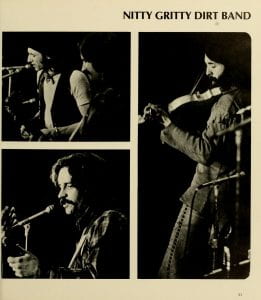
Also reflected in which musicians came to play concerts on campus, the popularity of rock ‘n’ roll saw a revival in 1976. What some might call an anomaly, it is understandable that the popularity of rock ‘n’ roll be revitalized on campus because of the political scandal of Watergate. In the wake of Nixon’s presidency, the American populace was left with a lack of trust of the federal government; this distrust and disillusionment was reflected in the rock ‘n’ roll music that was popular on campus. That year, Santana, Mirabai, Liverpool, and Fleetwood Mac all performed on campus. While this rock ‘n’ roll “revival” did seem to generalize what music the student population listened to, other bands that played on campus that year reflected the popularity of bluegrass and country. The Pure Prairie League, a country band, also was featured on campus and because of the numerous photographs that were featured in the Bluestone, they were clearly a very popular band to see. However, after 1976, nearly all of the bands that were featured on campus were bluegrass, country, or folk. Bands such as the Charlie Daniels Band, Vassar Clements, Hankey Mountain Express, and the Wright Brothers, all pictured below, graced the James Madison University stages and were received with great appeal.
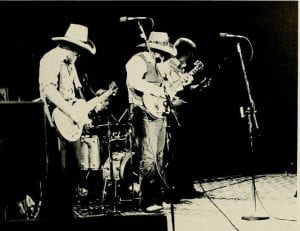
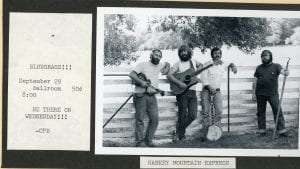
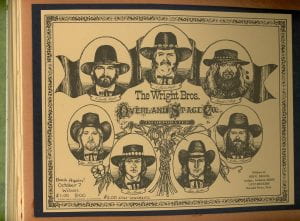
Tickets for the Marshall Tucker Band, another bluegrass band that came to the University in 1978, was even sold out. Signs that were hand-made for the ticket sales by the University Program Board (pictured below) were included in their organization scrapbooks, showing how important the success of this event was.
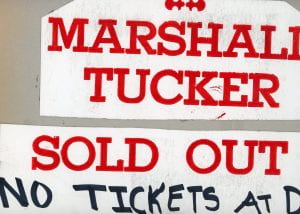
The popularity that country and bluegrass bands saw at James Madison at the end of the 1970s reflects the genres’ rise in popularity that occurred with the Southernization of the nation throughout the decade. Its prominent place in student culture is perhaps one of the most striking examples of Southernization and the rise of redneck culture on campus, and shows how this national trend truly did affect the university.
Works Cited
Hankey Mountain Express advertisement. University Program Board scrapbooks. James Madison University. 1977-1978.
Marshall Tucker Band ticket signs. University Program Board scrapbooks. James Madison University. 1977-1978.
Schulman, Bruce J. The Seventies: The Great Shift in American Culture, Society, and Politics. Cambridge, MA, Da Capo Press: 2001.
“WMRA-FM Platter Patter.” Genesis II. March 26, 1971.
Wright Brothers Overland Stage Co. advertisement. University Program Board scrapbooks. James Madison University. 1977-1978.
